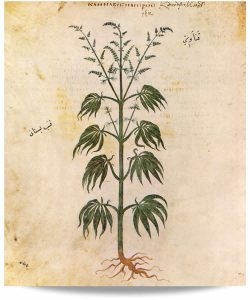 “Most Japanese people see cannabis as a subculture of Japan but they’re wrong. For thousands of years cannabis has been at the very heart of Japanese culture,” explains Takayasu Junichi, one of the country’s leading experts.
“Most Japanese people see cannabis as a subculture of Japan but they’re wrong. For thousands of years cannabis has been at the very heart of Japanese culture,” explains Takayasu Junichi, one of the country’s leading experts.
“However after Japan’s surrender in 1945, U.S. authorities occupied the country and they introduced American attitudes towards cannabis. Having effectively prohibited its cultivation in the States in 1937, Washington now sought to ban it in Japan. With the nation still under U.S. control, it passed the 1948 Cannabis Control Act. The law criminalized possession and unlicensed cultivation – and more than 60 years later, it remains at the core of Japan’s current anti-cannabis policy. At the time, the U.S. authorities appear to have passed off the Act as an altruistic desire to protect Japanese people from the evils of drugs. But critics point out that occupation authorities allowed the sale of over-the-counter amphetamines to continue until 1951. Instead, several Japanese experts contend that the ban was instigated by U.S. petrochemical lobbyists who wanted to overturn the Japanese cannabis fiber industry and open the market to American-made artificial materials, including nylon.”
Simultaneously, a sustained propaganda campaign has cleaved the Japanese public from their cannabis cultural roots – brainwashing them into perceiving marijuana as a poison on a par with heroin or crack cocaine.
These campaigns might have stamped out all traces of Japan’s millennia-long history were it not for one factor – the resilience of the cannabis plants themselves. Every summer millions of these bushes – the feral offspring of cannabis legally cultivated before 1948 – pop up in the hills and plains of rural Japan. In 2006, 300 plants even sprouted in the grounds of Abashiri Prison in Hokkaido – much to the embarrassment of the powers-that-be. Every year, the Japanese police wage well-publicized eradication campaigns against these plants. On average, they discover and destroy between one and two million of them. But like so many other aspects of the drug war, theirs is a losing battle and the next year, the plants grow back in larger numbers than ever.”
